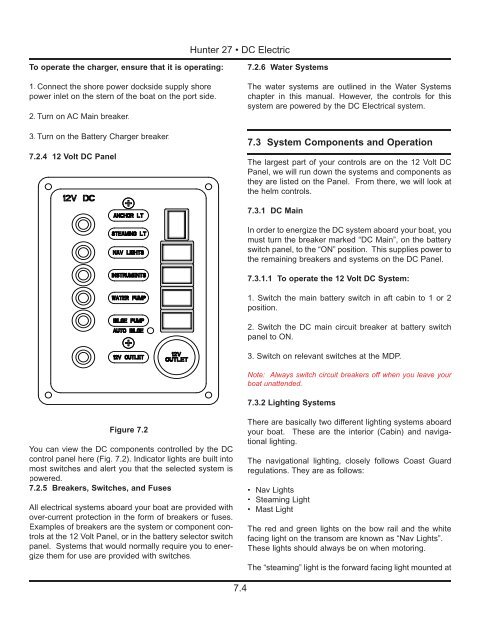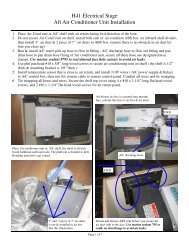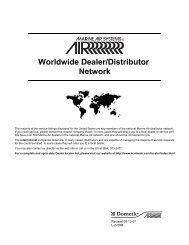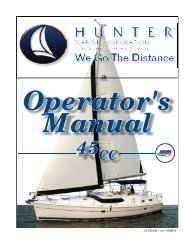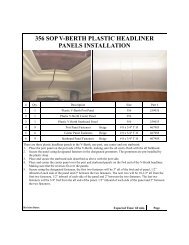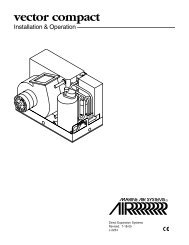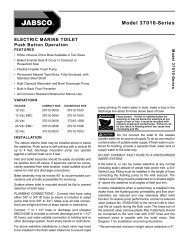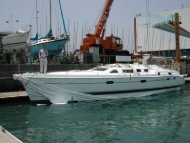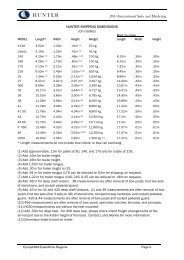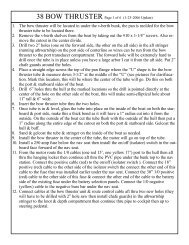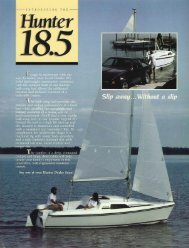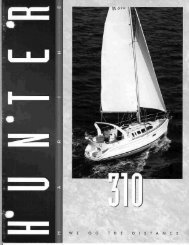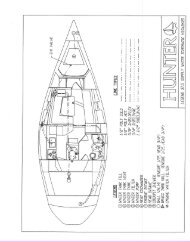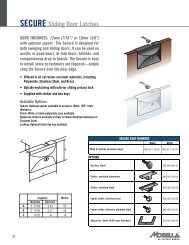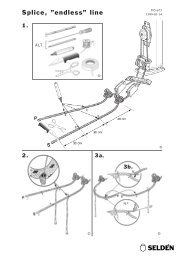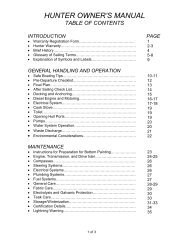27 Operator's Manual.. - Marlow-Hunter, LLC
27 Operator's Manual.. - Marlow-Hunter, LLC
27 Operator's Manual.. - Marlow-Hunter, LLC
Create successful ePaper yourself
Turn your PDF publications into a flip-book with our unique Google optimized e-Paper software.
<strong>Hunter</strong> <strong>27</strong> • DC Electric<br />
To operate the charger, ensure that it is operating:<br />
1. Connect the shore power dockside supply shore<br />
power inlet on the stern of the boat on the port side.<br />
2. Turn on AC Main breaker.<br />
3. Turn on the Battery Charger breaker.<br />
7.2.4 12 Volt DC Panel<br />
7.2.6 Water Systems<br />
The water systems are outlined in the Water Systems<br />
chapter in this manual. However, the controls for this<br />
system are powered by the DC Electrical system.<br />
7.3 System Components and Operation<br />
The largest part of your controls are on the 12 Volt DC<br />
Panel, we will run down the systems and components as<br />
they are listed on the Panel. From there, we will look at<br />
the helm controls.<br />
7.3.1 DC Main<br />
In order to energize the DC system aboard your boat, you<br />
must turn the breaker marked “DC Main”, on the battery<br />
switch panel, to the “ON” position. This supplies power to<br />
the remaining breakers and systems on the DC Panel.<br />
7.3.1.1 To operate the 12 Volt DC System:<br />
1. Switch the main battery switch in aft cabin to 1 or 2<br />
position.<br />
2. Switch the DC main circuit breaker at battery switch<br />
panel to ON.<br />
3. Switch on relevant switches at the MDP.<br />
Note: Always switch circuit breakers off when you leave your<br />
boat unattended.<br />
7.3.2 Lighting Systems<br />
Figure 7.2<br />
You can view the DC components controlled by the DC<br />
control panel here (Fig. 7.2). Indicator lights are built into<br />
most switches and alert you that the selected system is<br />
powered.<br />
7.2.5 Breakers, Switches, and Fuses<br />
All electrical systems aboard your boat are provided with<br />
over-current protection in the form of breakers or fuses.<br />
Examples of breakers are the system or component controls<br />
at the 12 Volt Panel, or in the battery selector switch<br />
panel. Systems that would normally require you to energize<br />
them for use are provided with switches.<br />
There are basically two different lighting systems aboard<br />
your boat. These are the interior (Cabin) and navigational<br />
lighting.<br />
The navigational lighting, closely follows Coast Guard<br />
regulations. They are as follows:<br />
•<br />
•<br />
•<br />
Nav Lights<br />
Steaming Light<br />
Mast Light<br />
The red and green lights on the bow rail and the white<br />
facing light on the transom are known as “Nav Lights”.<br />
These lights should always be on when motoring.<br />
The “steaming” light is the forward facing light mounted at<br />
7.4


